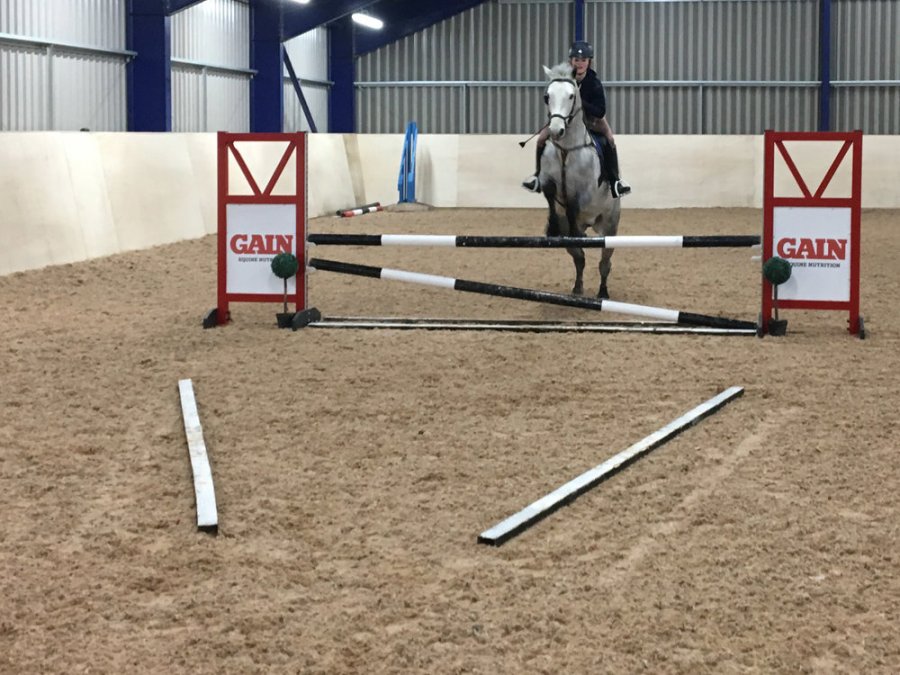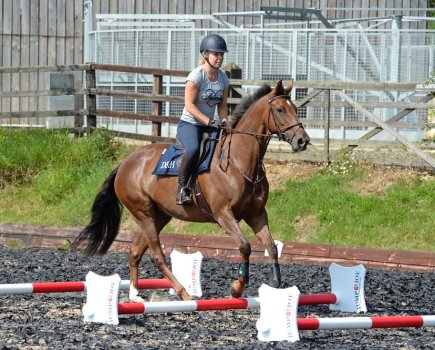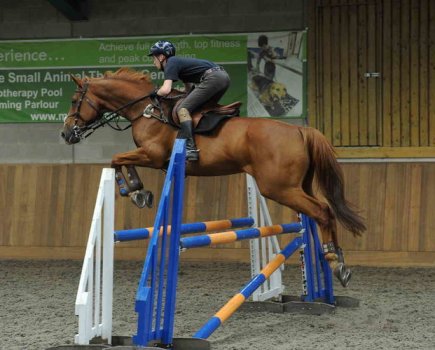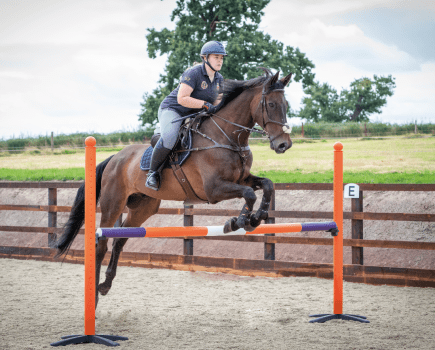If your horse struggles to pick up different leads after jumping, but performs perfectly in their flatwork, it may be that your horse is not straight approaching the jump.
To correct this, mirrors can be helpful, but it’s also a lot to take in while also trying to jump an obstacle, so see if you can get someone to video you. Slow motion replay is a very useful tool.
Come in wide
Trying to shift your weight too much can cause your horse to lose balance, so a better way of helping your horse get the idea of changing legs over the fence is to ride a little too wide to it.
Do this by lining up for the outside edge of the pole then put him very slightly into outside flexion and move him in towards the centre of the fence off your outside leg. Think of it as the tiniest bit of leg-yield.
This creates suppleness for the new direction of travel and so encourages your horse to change leading leg over the fence. It doesn’t need to be a dramatic movement – just a hint of outside bend.
Introduce V poles
If you notice some loss of straightness, which might be causing a preference for one leg leading, try introducing a very wide ‘V’ of poles (at least 6ft apart at the centre of the V), placed a minimum of 10ft after the fence. Keep the fence small when you first introduce this.
As your horse’s confidence in the exercise increases (initially he may notice the poles as he lands and slow down), you can narrow the gap a little to further encourage straightness and therefore the correct lead. Ideally, have someone with you to help adjust the poles.
Preference for a certain lead can sometimes be caused by balance or suppleness issues, so it’s worth ensuring there is no physical issue if problems persist.
Don’t miss the latest issue of Your Horse Magazine, jam-packed with training and veterinary advice, horse-care tips and the latest equestrian products available on shop shelves, on sale now.










